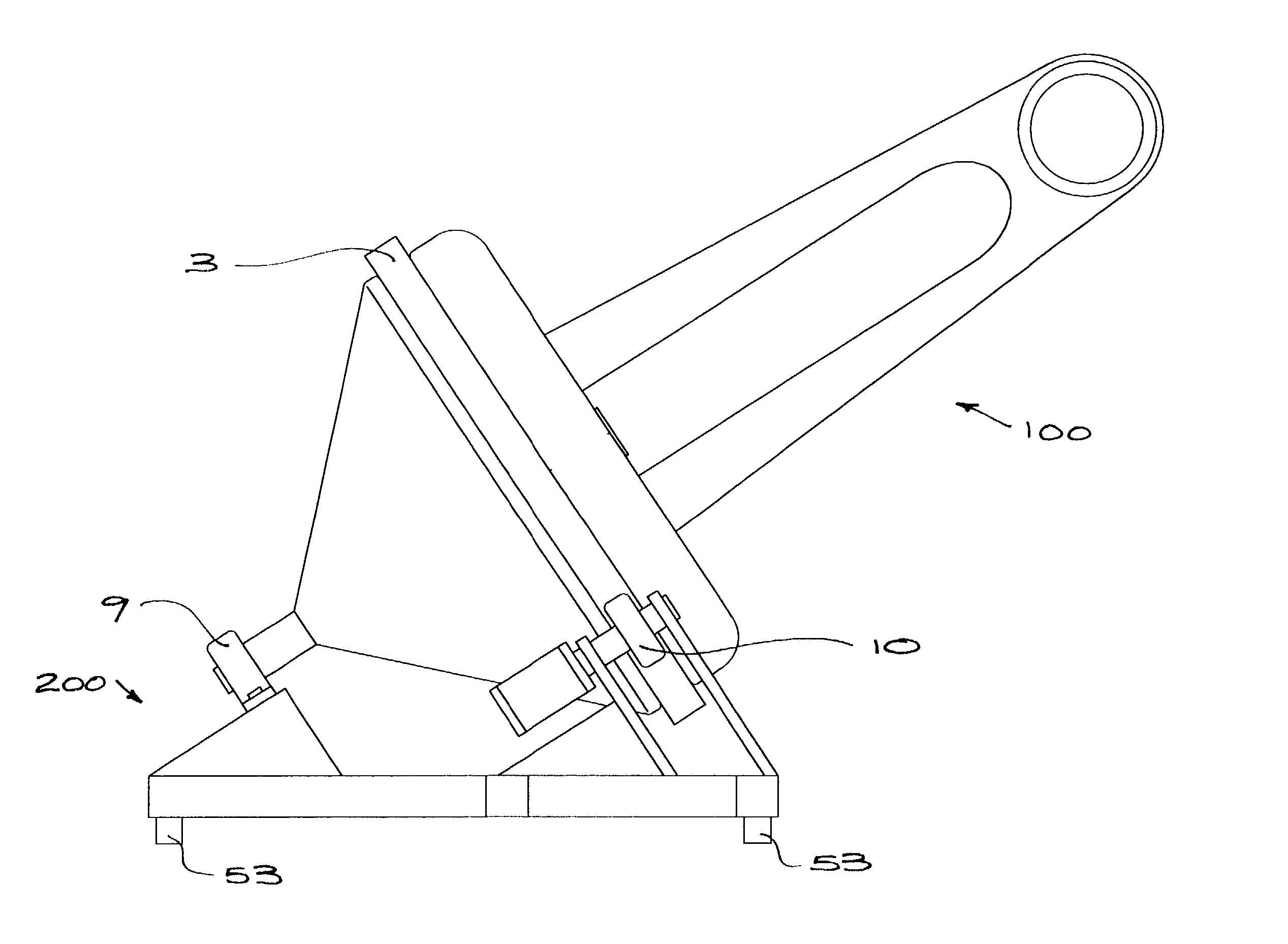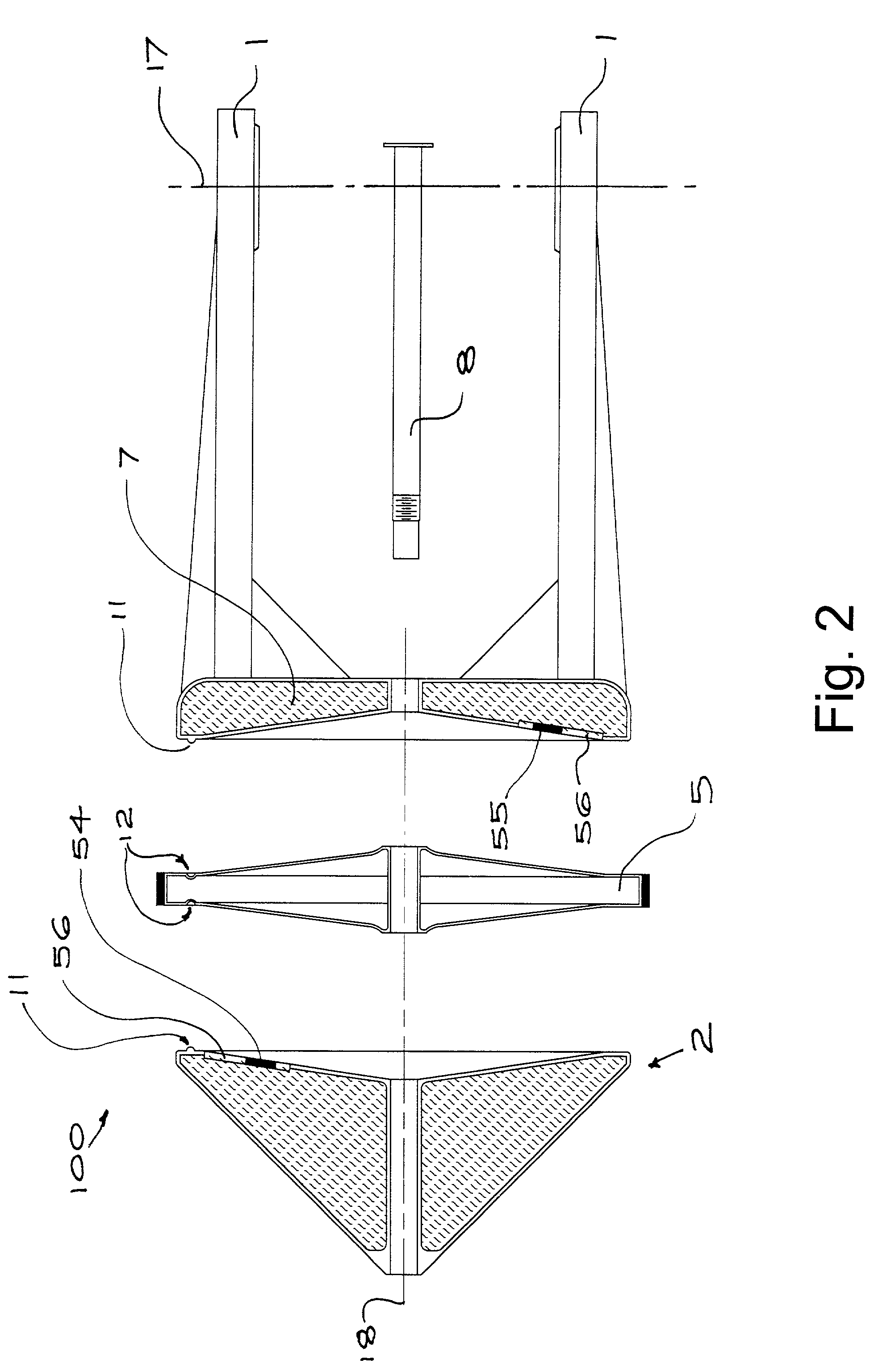Telescope mount
- Summary
- Abstract
- Description
- Claims
- Application Information
AI Technical Summary
Benefits of technology
Problems solved by technology
Method used
Image
Examples
Embodiment Construction
[0027] Referring to FIGS. 1 and 2, a fork mount 100 for a telescope is substantially symmetrical about axis 18 and includes two tines 1 connected by a hollow yoke 7 which is adapted to contain ballast material (indicated by the hatching on the drawing). The yoke 7 is fixed to one side of a drive wheel 5, the other side of which is fixed to a generally conical ballast container 2. Bearing apertures 13 are provided in the opposing tines 1 and define an axis 17, orthogonal to axis 18. Both the container 2 and yoke 7 are liquid tight and capable of holding any flowable ballast.
[0028] The container 2 and wheel 5 are adapted to be readily separable from the yoke 7. When separated (as shown in FIG. 2) ballast can be added or removed by means of closures 54, 55 in the container 2 and yoke 7 respectively. The closures 54, 55 are each formed in a membrane 56 to equalize atmospheric pressure between inside the vessel and the surrounding atmosphere. The container 2, wheel 5 and yoke 7 are clamp...
PUM
 Login to View More
Login to View More Abstract
Description
Claims
Application Information
 Login to View More
Login to View More - R&D
- Intellectual Property
- Life Sciences
- Materials
- Tech Scout
- Unparalleled Data Quality
- Higher Quality Content
- 60% Fewer Hallucinations
Browse by: Latest US Patents, China's latest patents, Technical Efficacy Thesaurus, Application Domain, Technology Topic, Popular Technical Reports.
© 2025 PatSnap. All rights reserved.Legal|Privacy policy|Modern Slavery Act Transparency Statement|Sitemap|About US| Contact US: help@patsnap.com



